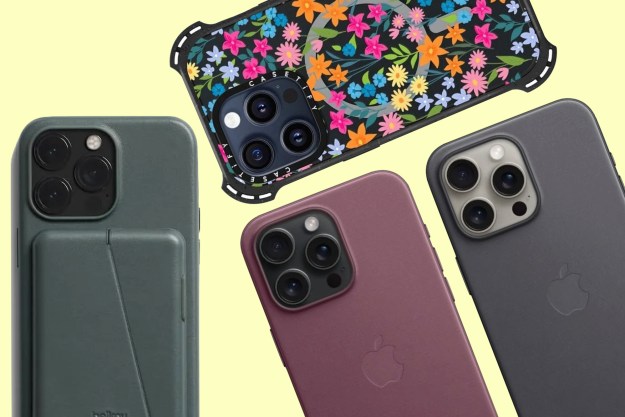
New York City Mayor Michael Bloomberg’s spokesman may have just inadvertently confirmed that Apple’s next iPhone will come with a fingerprint (or biometric) sensor built into it. The comment came after Bloomberg took heat for suggesting residents of the city’s public housing be fingerprinted to access their homes. Bloomberg’s remark was made while discussing how to reduce crime in the public apartment complexes, which house 5 percent of city residents, but account for 20 percent of its crime.
When defending the mayor, his Press Secretary Marc La Vorgna said the following in an email to Politicker: “All security is moving towards biometrics – even the next iPhone will have fingerprint security.”
We called La Vorgna’s office, but were unable to reach the Press Secretary. But we did find another comment on his Twitter feed, indicating how strongly he believes in biometrics.
I look forward to 20 yrs from now – when everything will use biometrics – and people will look at candidates comments today and laugh
— Marc La Vorgna (@marclavorgna) August 16, 2013
We also reached out to Apple, but have (predictably) not received confirmation that the Office of the Mayor knows anything about the next iPhone.
How Bloomberg’s office would know this
Granted, Bloomberg’s spokesman may just read a lot of rumors online. We’ve all heard rumors that the next iPhone may have a fingerprint sensor built into it, and Apple’s purchase of AuthenTec, the leader in fingerprint sensors, is a strong hint that it’s interested in biometrics. However, we have reason to believe that Mayor Bloomberg’s office may have seen, used, or been briefed on the next iPhone. This would make the spokesman’s response a slip of the tongue (or fingers, in this case), not just more rumors.
In Dec. 2012, Bloomberg blamed a rise in New York City crime to iPhone theft. In 2012, 3,484 more major crimes were reported than 2011. These numbers would have been down if not for an increase in Apple product thefts, which accounted for 3,890 incidences that year. There’s even a term for this kind of theft: “Apple picking.” As many as 1 in 3 crimes around the country are related to cell phone theft; in NYC this number is 40 percent; and in San Francisco, phone theft accounts for half of all crime.
Many believe that a more secure identifier, like a fingerprint, could vastly improve the security of electronics, potentially locking intruders out of a device, reducing the incentive to steal phones, and eliminating the need to use passwords for almost everything. However, as we’ve pointed out in the past, there are a lot of problems with fingerprint sensors, as well.
This issue of iPhone theft hit a high this year, and law enforcement officials around the country began to band together. A group of “prosecutors, police, political officials and consumer advocates from more than a dozen states” formed a coalition called the “Secure Our Smartphones Initiative” on June 13, and began demanding a “kill switch” for smartphones, or the ability to remotely and permanently shut them off if they’re stolen. (Read our thoughts on Why kill switches are a terrible idea.)
The coalition was led by New York Attorney General Eric Schneiderman and San Francisco District Attorney George Gascon at an event called the “Smartphone Summit” in NYC. Both men warned the mobile phone industry that it needed to act on this problem soon. Representatives from Apple, Microsoft, Samsung, and Google were in attendance, reports the AP.
At the event, Apple privately briefed Schneiderman and Gascon on some details of an upcoming security improvement to its next iPhone.
“Apple has been very vague as to what the system will do,” Gascon said at the summit. “We’ve been led to believe that it is not a ‘kill switch.'”
With NYC at the center of this escalating issue, it’s highly likely that some members in the Office of the Mayor have been briefed, at least vaguely, on the upcoming iPhone’s new fingerprint sensor. One day after the June 13 “Smartphone Summit,” Mayor Bloomberg announced that he will co-host another technology summit on Sept. 30 in New York, again in collaboration with San Francisco, which is very close to Apple’s headquarters in Cupertino, California. The new summit will likely fall only a week or so after the new iPhone hits store shelves. Bloomberg’s recent vocal endorsements of biometrics could be because he knows that the most popular phone will soon make it a mainstream technology.
Not enough evidence? How about all this?

In July, rumor site DigiTimes also reported that Apple was having trouble manufacturing the next iPhone due to issues with the fingerprint sensor. AppleInsider has detailed how the upcoming iPhone Home button will bulge out instead of concave inward like all previous models. Apple also filed for a patent to confine a fingerprint sensor in a small space this June.
(Read: iPhone 5S and 5C Rumors: Everything we know)
We will be surprised if the next iPhone does not have a fingerprint sensor built into it. If, for some reason, it doesn’t, you can be fairly certain that it’s sequel will. Either way, we should find out on Sept. 10, when Apple is rumored to unveil the next iPhone.
(Special thanks to loyal reader Simon for the tip!)
Editors' Recommendations
- Why you should buy the iPhone 15 Pro instead of the iPhone 15 Pro Max
- Here’s how Apple could change your iPhone forever
- 10 iPhone productivity apps you need to download right now
- Why you should buy the iPhone 15 Pro Max instead of the iPhone 15 Pro
- This one thing could make iOS 18 the best iPhone update in years


